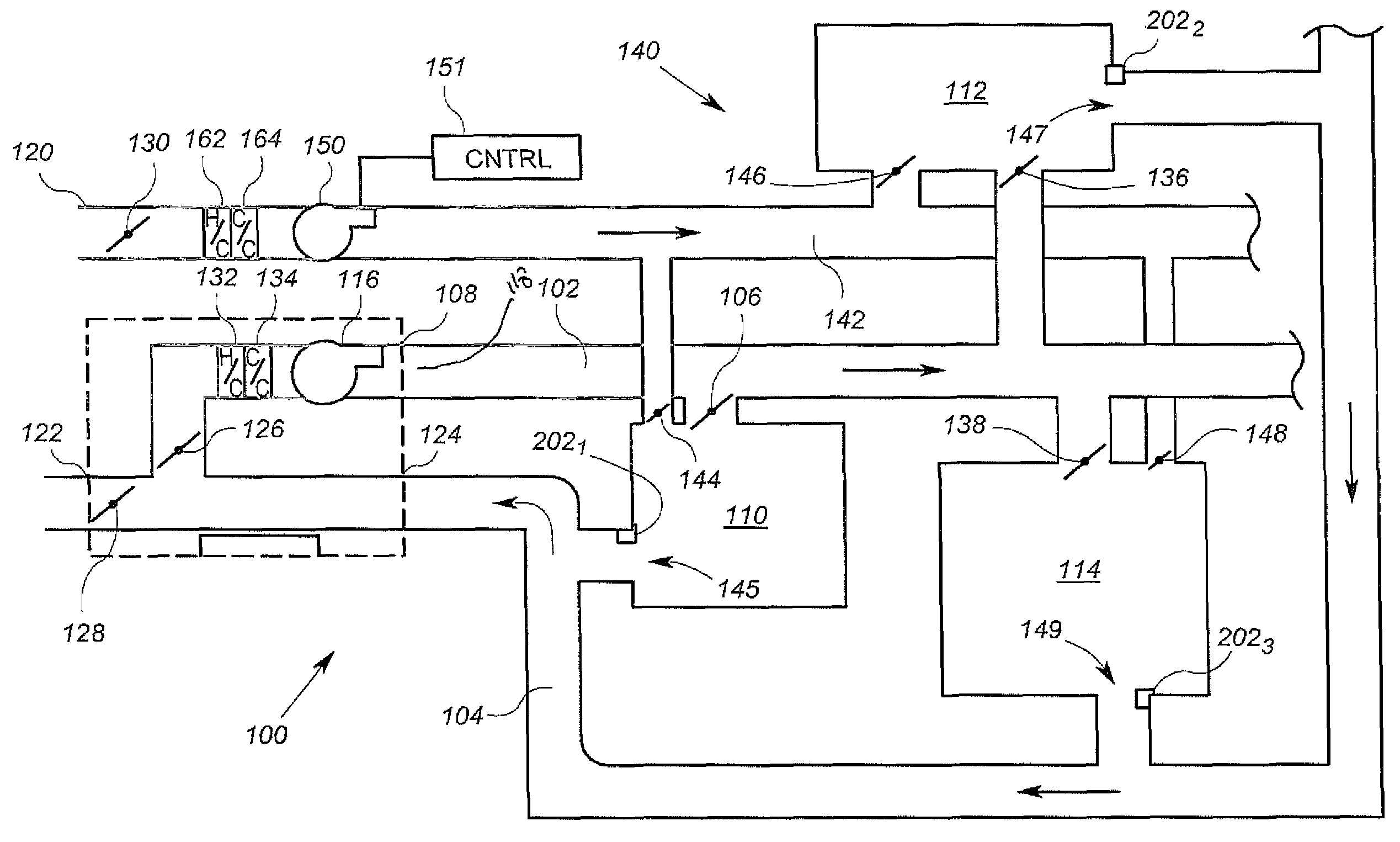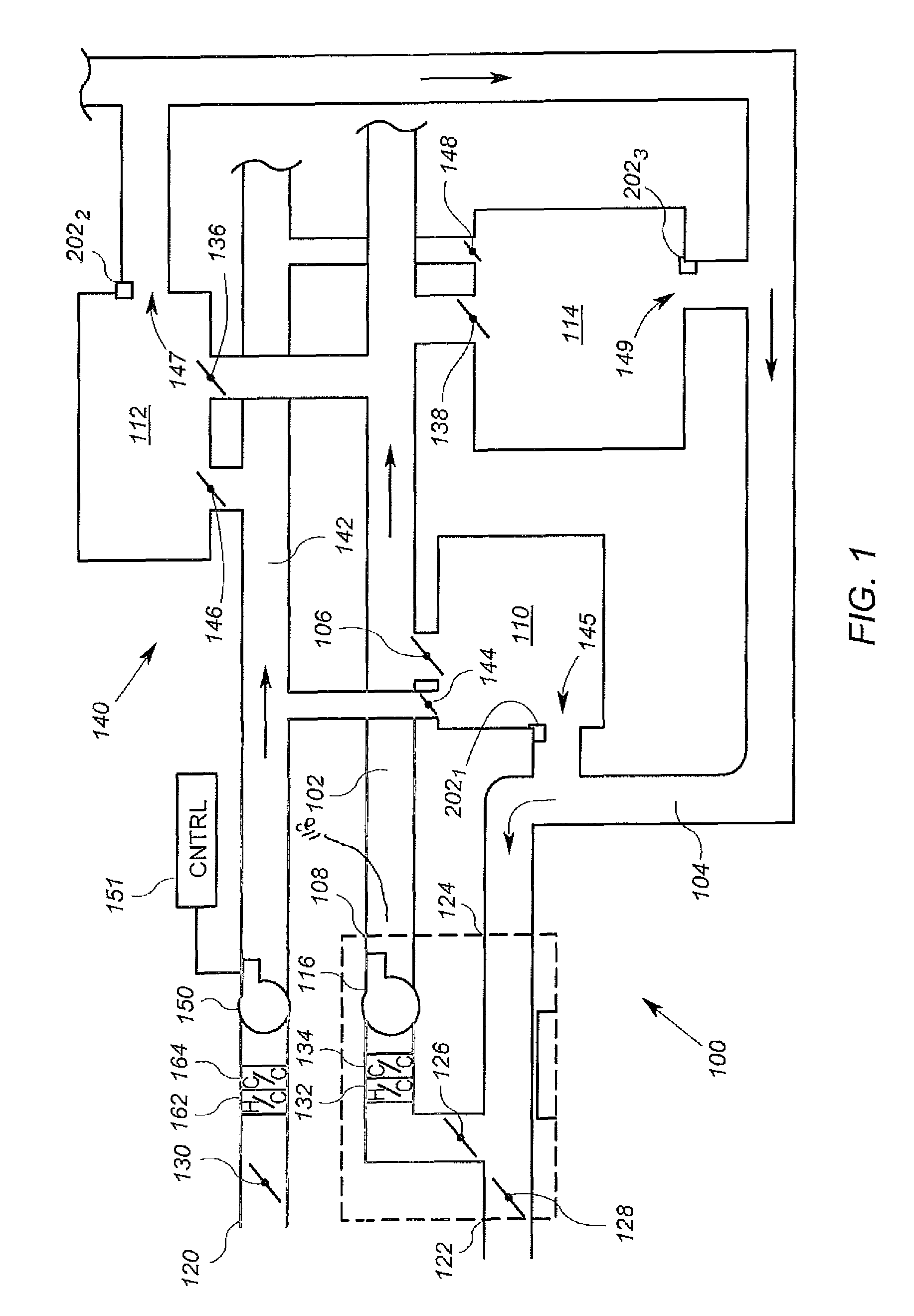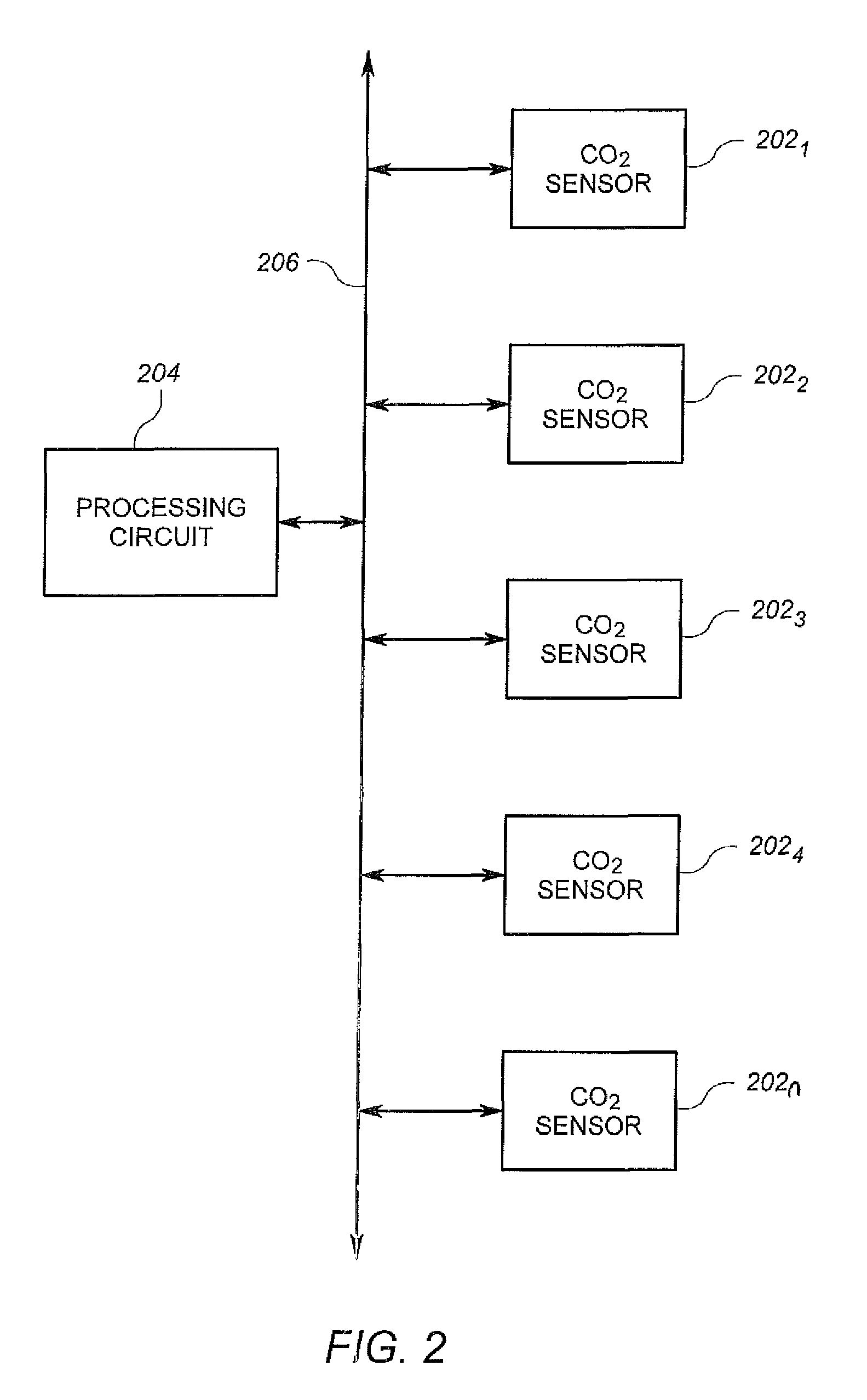Ventilation control based on occupancy
a technology of ventilation control and occupancy, applied in ventilation systems, fire alarms, heating types, etc., can solve the problems of inseparable heated or chilled air from fresh air at the room level, limited schemes, and work equipment and/or work materials adding irritating or harmful chemicals to the air being respirated by the occupants, etc., to achieve more granular control in meeting
- Summary
- Abstract
- Description
- Claims
- Application Information
AI Technical Summary
Benefits of technology
Problems solved by technology
Method used
Image
Examples
Embodiment Construction
[0019]FIG. 1 shows an arrangement according to one embodiment of the invention that includes a portion of a exemplary HVAC system 100 and a portion of a fresh air ventilation system 140. Generally, the HVAC system 100 provides the heating and / or cooling to the building, while the ventilation system 140 provides fresh air to the building.
[0020]The portion of the HVAC system 100 illustrated in FIG. 1 includes a first (temperature-controlling air or “TCA”) supply duct 102, a first room TCA damper system 106, a second room TCA damper system 136, a third room TCA damper system 138, and an air handling unit 108. The HVAC system 100 provides heated, chilled and / or fresh air throughout a building having a multiplicity of zones, spaces and / or rooms. In general, the chilled air is used in warmer months of the year, and is chilled to a temperature that is below the lowest desirable air temperature within a building. Thus, the chilled air can be used to reduce temperature within a room or space...
PUM
 Login to View More
Login to View More Abstract
Description
Claims
Application Information
 Login to View More
Login to View More - R&D
- Intellectual Property
- Life Sciences
- Materials
- Tech Scout
- Unparalleled Data Quality
- Higher Quality Content
- 60% Fewer Hallucinations
Browse by: Latest US Patents, China's latest patents, Technical Efficacy Thesaurus, Application Domain, Technology Topic, Popular Technical Reports.
© 2025 PatSnap. All rights reserved.Legal|Privacy policy|Modern Slavery Act Transparency Statement|Sitemap|About US| Contact US: help@patsnap.com



